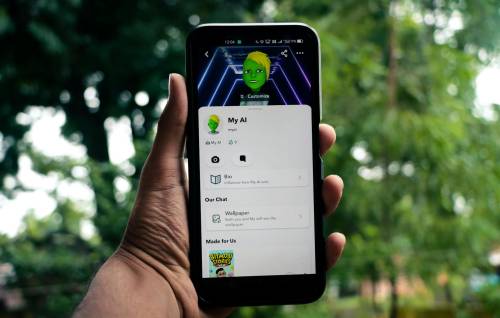

With the rise of artificial intelligence (AI) in the workplace, productivity and efficiency can significantly increase. Whether it automates mundane tasks or provides intelligent insights, AI has the potential to revolutionize the way we work.
In this article, we discuss 10 AI tricks that will help you be more productive and one that you should avoid.
1. Make scheduling a breeze with AI-powered calendars.
Do you remember when juggling schedules and playing Tetris with appointments was so much fun? Despite my sarcasm, AI calendars like Calendar, Motion, and Reclaim remove that chaos. By leveraging your habits, preferences, and workload, these AI-powered calendars can assist you with;
- Smart scheduling. Using artificial intelligence, meetings, tasks, and gym sessions can be scheduled seamlessly.
- Conquerors conflict. You can say goodbye to double bookings. Using AI, you proactively identify and resolve any scheduling conflicts.
- Master time blocking. Do you feel overwhelmed? If so, optimizing productivity is easier with AI, which lets you block specific time slots for particular tasks.
- Meeting maestro. Having trouble finding a time that works for everyone? No problem. By analyzing calendars, AI suggests mutually agreeable times and eliminates endless email chains.
- Intelligent reminders. Based on your learning patterns and priorities, AI sets personalized reminders that keep you in the know.
AI calendars also offer additional perks, such as;
- Insights and analytics. With AI-powered reports, you can identify your most productive hours, busiest days, and areas for improvement. As a result, you’ll get valuable insights into your time management.
- Integrations galore. Your favorite AI productivity tools can be integrated into your calendar to maximize their potential.
- Personalized planning. An AI calendar can even suggest activities that match your focus for optimal productivity based on your energy levels during the day.
2. Use AI-powered writing assistants to find the right words.
Are you struggling with writer’s block or battling grammar gremlins? A writing assistant powered by artificial intelligence can be your knight in shining armor. The following are two popular options.
In addition to checking grammar and spelling, Grammarly offers suggestions for improving style and clarity. This is one of the tools I use the most. Not only has it made me more productive, but it has also helped improve my writing.
On the other hand, with Jasper.ai, you can generate content for blog posts, social media captions, and email messages.
3. Time-saving task management tools.
Tired of endless to-do lists? Your workload can be prioritized and conquered with the help of AI-powered task management tools.
Todoist, for example, prioritizes tasks based on importance and urgency, ensuring you stay productive and focused.
Aside from project management, Asana offers intelligent task suggestions and automated workflows.
4. Use AI-driven tools to become a project management heavyweight.
You can think of AI project management tools as supercharged tools for your project management arsenal. This is how they can help you free up time:
- Streamlined automation. With AI automation, repetitive tasks are no longer a drain on your time and energy. Let AI handle the mundane aspects of your role while you focus on the strategic aspects.
- Real-time insights. With real-time project insights provided by AI, you can make informed, rapid decisions. In order to effectively manage projects, it is necessary to analyze complex patterns and trends.
- Risk mitigation. AI’s robust data analysis lets you identify potential project risks proactively. To avoid delays and budget issues, for example, you can anticipate problems in advance.
- Cost savings. As a result of AI, resource allocation is optimized, resulting in substantial cost savings. Specifically, AI can be used to allocate resources effectively taking into account employee skills, project priorities, and budget constraints.
In terms of AI project management tools, Forecast is one of the best. Through this platform, you can create projects, budget, allocate resources, manage tasks, invoicing, and report on them. As a result, it offers a centralized hub for managing projects, resources, and finances that seamlessly integrates with existing software. You’ll also experience improved internal operations, cross-team collaboration, and efficiency.
5. Analyze your data with ease.
Uncover hidden insights and make data-driven decisions with the help of AI-powered data analysis tools, such as;
- Tableau. With intuitive AI features, you can visualize complex datasets and uncover valuable insights.
- Google Sheets. Using built-in AI tools such as Smart Fill and Explore, you can explore data analysis made simple.
6. Improve your customer service with chatbots.
With AI chatbots, you can respond to routine inquiries and provide 24/7 support to your customers. In terms of popular options, here are two to consider;
- Intercom. Automate routine customer inquiries and provide excellent customer support 24 hours a day, 7 days a week.
- Zendesk. With the help of artificial intelligence, you can analyze customer interactions and identify areas for improvement.
7. Dominate your inbox using artificial intelligence.
Email is without a doubt one of the most important tools for communication today. Despite this, even the most organized individual can easily become overwhelmed by the sheer volume of messages. Your productivity can be significantly reduced by spending hours sifting through your inbox.
Email assistants powered by artificial intelligence can revolutionize how you manage your inbox. Using these tools, you can categorize, prioritize, and even draft responses to emails. As a result, automating routine tasks will allow you to focus on more strategic tasks.
- SaneBox. With this intelligent tool, you can automatically sort your inbox into categories such as “Important,” “Later,” and “News.” You can also block unwanted senders and set reminders for follow-ups.
- EmailTree. Specifically designed for customer support teams, EmailTree automates the management of incoming emails by suggesting follow-up actions.
8. Using artificial intelligence to assist with meetings and transcriptions.
You no longer have to manually record and transcribe your meetings or transcriptions with AI transcription and meeting assistant apps. By doing so, you can concentrate on the discussion and analyze the transcript at your convenience.
With Fireflies, for example, you can transcribe meetings, track conversation topics, and generate text from meetings. A built-in bot, Fred, can even answer specific questions based on your meeting history.
Additionally, Microsoft’s Copilot can streamline your workflow as well with its powerful AI capabilities. Using this in-browser assistant, you can turn long documents into concise notes by extracting key information.
9. AI-powered focus boosters for personal productivity.
By managing your time effectively and minimizing distractions, personal productivity tools can further enhance your efficiency. With the help of artificial intelligence features, these tools can provide valuable insights into your working habits and suggestions for improving them.
- Forest. By planting virtual trees instead of using your phone, this app encourages focus and focus on your goals.
- RescueTime. Utilizing artificial intelligence, this tool analyzes your productivity patterns and identifies potential areas for improvement.
10. Boost your performance with fitness apps.
Research has shown that regular exercise boosts employee well-being and performance. Moreover, physically active employees are more likely to experience:
- Higher job satisfaction
- Increased energy levels
- Improved concentration
- Enhanced creativity
- Reduced stress levels
- Better time management skills
- Increased resilience to work-related challenges
As a result of AI fitness apps, you can generate workouts that are tailored to your abilities and fitness levels based on the equipment you are using and your goals. For instance, Fitbod creates workouts tailored to your goals, preferences, and equipment availability. In order to challenge you appropriately, the intensity and the exercises must be continuously adjusted to keep track of your progress.
A Word of Caution: The Human Touch
Even though AI offers many benefits, it is important to remember that it cannot replace human judgment entirely. When AI is overused for decision-making, unintended consequences may occur. As such, the use of AI should augment your capabilities, not replace critical thinking.
Ultimately, aI-powered tools can significantly improve your email management, increase productivity, and contribute to your professional success.
FAQs
How can AI help me become more productive at work?
Using AI, you will be able to automate tasks, receive insights, and streamline workflows, resulting in a significant increase in productivity. Artificial intelligence can be used in a variety of ways, including:
- Task automation. With artificial intelligence, you can automate repetitive tasks such as data entry, scheduling, and email management, so you can focus on more strategic tasks.
- Intelligent assistance. You can use voice commands to request information, answer questions, and complete tasks with AI-powered virtual assistants.
- Data analysis. By analyzing large datasets, artificial intelligence can identify trends, patterns, and opportunities for improvement.
- Decision support. With AI, you can gain insight based on data to make informed decisions.
What are some popular AI tools for productivity?
Among the AI tools available to enhance your productivity are:
- Task management tools. A number of AI-powered tools are available for both task suggestion and priority ranking, such as Asana, Trello, and Monday.com.
- Virtual assistants. You can schedule meetings, send emails, and control smart devices with Google Assistant, Siri, and Alexa.
- Writing assistants. Using Grammarly and Jasper.ai, you can improve your grammar, style, and content to write more effectively.
- Data analysis tools. With Tableau and Power BI, you can identify trends and insights by analyzing data.
How can I effectively use AI in my workflow?
The following tips can help you successfully integrate AI into your workflow:
- Identify tasks that can be automated. AI can be used to automate repetitive or time-consuming tasks.
- Choose the right tools. Make sure your AI tools are compatible with your existing workflow and address your specific requirements.
- Experiment and learn. You should try different AI tools and techniques to see what works best for you.
- Continuously improve. Learn about the newest tools and techniques as AI technology evolves.
What are some potential challenges of using AI for work productivity?
In addition to AI being a powerful tool for productivity, it also poses some potential challenges:
- Data privacy and security. When using AI tools, make sure your data is protected.
- Job displacement. In some industries, AI can automate tasks, but it can also result in job displacement.
- Bias. When AI models are trained on biased data, they can be biased.
Image Credit: Sanket Mishra; Pexels











John Rampton
John’s goal in life is to make people’s lives much more productive. Upping productivity allows us to spend more time doing the things we enjoy most. John was recently recognized by Entrepreneur Magazine as being one of the top marketers in the World. John is co-founder of Calendar.